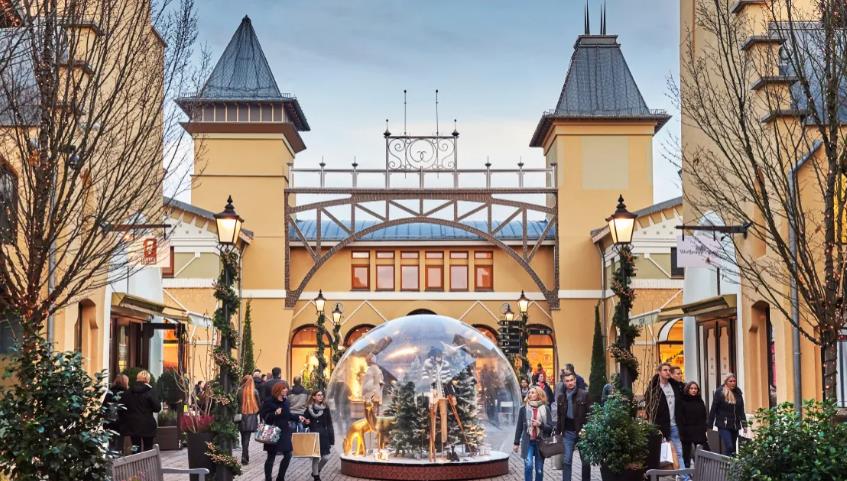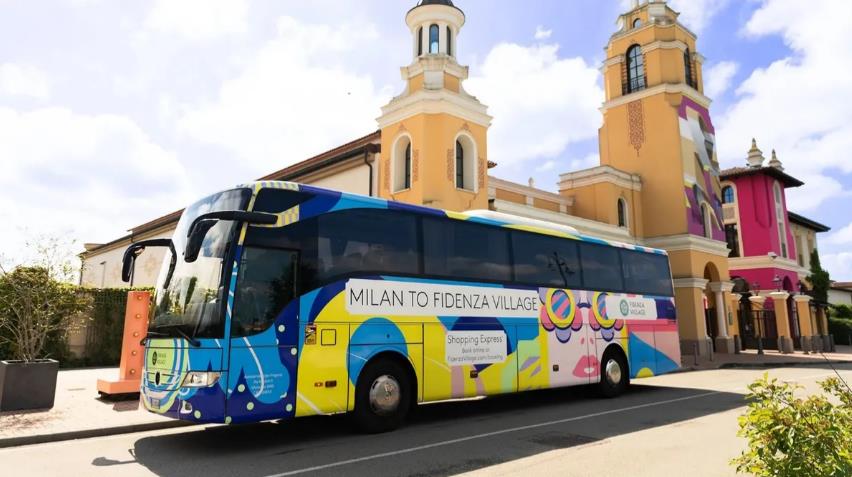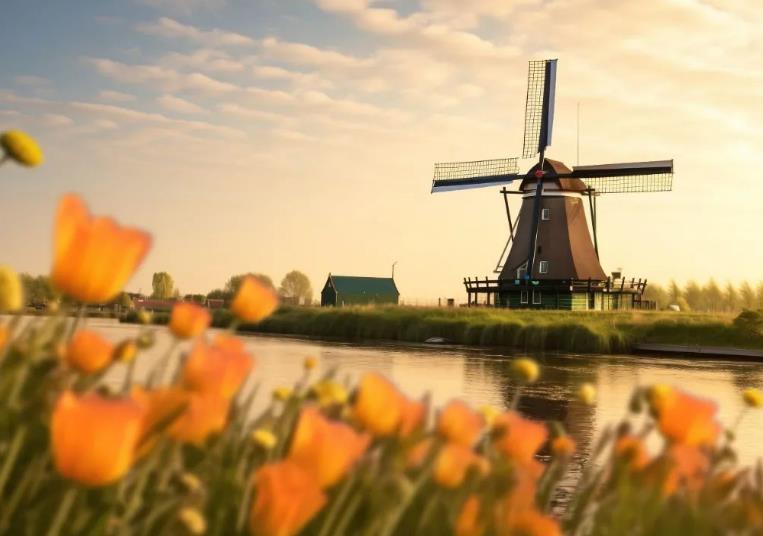https://tw.trip.com/moments/destination-sofia-1671/
2025 索非亞旅遊指南:必看景點、熱門美食、飯店、交通路線 (5 月更新)
索非亞今日天氣
晴朗 5-18℃
索非亞的熱門景點
索菲亞亞歷山大·涅夫斯基主教座堂
(25)索菲婭聖索菲亞教堂
(13)關於索非亞的全部 Moments
保加利亞旅行|索菲亞怎麼玩?看這篇攻略就夠了!
保加利亞簡直是個寶藏旅行地! 來之前,我還以為首都索菲亞平平無奇 逛了一天之後,完全改變了看法。 這裡有好多博物館和教堂,能讓你收穫滿滿 還有那些藏在角落裡的咖啡館和餐廳,隨便一個轉角,都可能帶給你意想不到的驚喜💕 索菲亞特別適合來一場愜意的city walk🚶🏻♂️ 幾個主要景點靠步行就能輕鬆抵達。 一日遊下來,行程充實又有趣! ✨索菲亞一日遊 ✅中央溫泉浴池(索非亞歷史博物館) 第一站就去中央溫泉浴池,如今這裡是索非亞歷史博物館,展示了從公元前6世紀到1940年不同時期索菲亞的人文歷史和文化,十分值得一看。旁邊就是班亞巴什清真寺,在外面欣賞一下建築外觀也很不錯👀 ✅聖禮拜教堂 從中央溫泉浴池出發,途經聖佩特卡教堂,然後前往聖禮拜教堂。⛪️ 聖佩特卡教堂建在地下,目前內部不對外開放,只能看看外觀。聖禮拜教堂最早建於10世紀,歷經多次破壞和重建,現在我們看到的是19世紀中期建成的樣子。 ✅聖喬治圓形教堂 接著去附近的聖喬治圓形教堂,它可是索菲亞最古老的紀念建築。從教堂出來,不遠處就是拉格大廈,對面還有聖索非亞女神像,作為索菲亞的地標建築,一定得去打卡。 ✅國家考古博物館 這是我在索菲亞最喜歡的博物館,千萬別錯過!它原來是索菲亞最大的清真寺,館內展出了古代色雷斯人的黃金、白銀等珍貴寶藏。在裡面漫步,連腳下的地板都充滿古樸的韻味,彷彿能觸摸到歷史的痕跡。 ✅國家美術館:這裡原本是保加利亞國王宮殿的西翼 ,建築本身就是現代與民族復興藝術的典型代表。館內收藏了約5萬件保加利亞藝術品,還有大量中世紀繪畫。美術館對面不遠處是國家歌劇院,可以看看外觀。旁邊還有聖尼古拉二世教堂,也可以順路遊覽一番。 ✅亞歷山大·涅夫斯基教堂 這座教堂也被叫做金頂教堂,是來索菲亞絕對不能錯過的地標。它不僅是巴爾幹半島最大的教堂,也是東正教在世界上最大的教堂之一,教堂內部金碧輝煌,壯觀無比。 ✅聖索菲亞教堂 相比之下,聖索菲亞教堂更顯古樸。索菲亞這座城市在14世紀時,就是因這座教堂而得名。 ✅索菲亞大學 要是時間充裕,還可以去索菲亞大學逛逛,巴洛克風格的建築古典又氣派。 大學不遠處有蘇維埃紀念碑、鷹橋,還有保加利亞議會大廈,都可以一併遊覽。The Culinary Cruise22保加利亞秘境之旅:東歐遺落的瑰寶。
保加利亞,一個名字裡就帶着詩意與浪漫的地方,它的美,不僅僅是山川湖海的壯麗,更是歷史與現代交織的獨特韻味。這裡,古老的城堡與教堂訴說着千年的故事,每一磚一瓦都彷彿在低語過往的輝煌與滄桑。索菲亞大教堂的雄偉身姿,不僅是宗教的聖地,也是建築藝術的瑰寶,讓人在讚嘆之餘,不禁沉醉於那份穿越時空的對話。 而談到自然風光,保加利亞的玫瑰谷絕對是不可錯過的奇蹟。這片被譽為「玫瑰之鄉」的土地,每年初夏時分,玫瑰競相綻放,香氣四溢,不僅美化了大地,更是世界頂級玫瑰油的產地。漫步其間,彷彿置身於一片粉色的夢境,每一次呼吸都是對美好生活的嚮往與讚美。 更令人心動的是,保加利亞還是《花花公子》雜誌評選的「世界十大性感海灘」之一——金沙灘的所在地。這裡的沙灘細膩如綢,海水碧藍清澈,與遠處的山巒相映成趣,構成了一幅令人心曠神怡的畫卷。無論是日光浴、衝浪還是簡單地漫步海邊,都能讓人忘卻塵囂,盡享寧靜與愜意。VoittoLepp?l?3天堂般的建築:索菲亞必遊的教堂
保加利亞索菲亞是一座文化底蘊深厚的城市,您可以參觀這裡許多具有歷史意義的東正教教堂。 出發 - 您可以搭乘地鐵或步行出行。 1. 聖尼古拉斯俄羅斯教堂 亮點 - 這是一座令人驚嘆的建築瑰寶。教堂融合了俄羅斯東正教傳統、鮮豔的金色圓頂和精緻的馬賽克。外面有一個美麗的花園,為城市中心提供了一個寧靜的避風港。 2.聖索菲亞教堂 亮點 - 這是一座歷史悠久的公元 6 世紀拜占庭大教堂,以其古老的建築而聞名,並以索菲亞市的名字命名。 3. 聖喬治圓形教堂 亮點 - 這座古老的教堂建於 4 世紀,以其壁畫而聞名。它是該市現存最古老的建築。 4. 聖內德利亞教堂 亮點 - 這是一座歷史悠久的東正教教堂,擁有引人注目的圓頂建築。 #教堂 #photolocation #保加利亞 #索菲亞 #文化 #100waysoftravel #travellerswonderlandLQCS3弗拉納公園的秋天🌳
#秋季 秋天期間,我參觀了索菲亞的弗拉納公園,度過了一段奇妙的時光! 🍂 這個公園美得令人驚嘆,樹木呈現出鮮豔的紅色、橙色和黃色。走在蜿蜒的小路上,我彷彿走進了童話故事裡。入場免費,是您悠閒散步且無需花太多錢的絕佳去處。 我花了幾個小時探索風景優美的花園,呼吸新鮮空氣並拍攝風景如畫的照片。園區內的弗拉納皇宮為我的這次參觀增添了一絲歷史氣息。散步後,我找到一張舒適的長椅放鬆一下,享受附近咖啡館的一杯熱咖啡。 ☕ 如果你秋天來到索菲亞,千萬不要錯過這顆隱藏的寶石——這是逃離大自然的完美之地! #旅行 #VranaPark #索菲亞 #AutumnVibes #NatureEscape #TravelDiariesLexusLC50010弗拉納皇宮遊樂場🏟️
#操場 我最近在索菲亞弗拉納皇宮遊樂場度過了愉快的一天,這是一次奇妙的體驗! 🌳 這個遊樂場坐落在皇宮美麗的場地內,非常適合家庭遊玩,為您提供遠離城市喧囂的寧靜休憩之所。進入場地是免費的,因此這是一次經濟實惠的出遊。 遊樂場本身維護良好,設有各種遊樂設施、鞦韆和滑梯,周圍環繞著鬱鬱蔥蔥的綠色植物。這是一個適合孩子們奔跑玩耍的好地方!在遊樂場玩了一會兒後,我參觀了宮殿花園,那裡非常美麗,盛開著鮮豔的花朵。 🌼 附近的景點包括故宮博物館和美麗的公園區,您可以在那裡放鬆身心。如果你在索非亞,這對孩子和成人來說都是一個令人愉快的地方! #旅行 #RoyalPalaceVrana #索菲亞 #家庭樂趣 #遊樂場冒險 #探索保加利亞LexusLC50010索菲亞是個有趣的城市🏙️
#travelchecklist 我剛剛在保加利亞索菲亞度過了幾天,這是一次豐富的經歷! 🇧🇬 這座城市完美地融合了歷史與現代,隨處可見令人驚嘆的建築。我參觀了標誌性的亞歷山大·涅夫斯基大教堂,它是免費入場的,它的金色圓頂和精美的壁畫令我驚嘆不已。 漫步在維托沙大道是一大亮點——大道兩旁遍布迷人的咖啡館和商店。我在當地一家餐廳享用了一頓美味的餐點,花費約 25 保加利亞列弗,品嚐了 banitsa 和 shoppska 沙拉等傳統保加利亞菜餚。 🍽️ 我還去了維托沙山一日遊,距離市區只有很短的車程,我在那裡徒步走過一些美麗的小徑,欣賞了下面索非亞的壯麗景色。大眾運輸十分便利,可以輕鬆遊覽。如果您正在尋找一個擁有豐富文化和自然美景的目的地,索菲亞絕對值得一遊! #trip #索菲亞 #ExploreBulgaria #CulturalJourney #VitoshaMountain #TravelDiariesLexusLC50010索菲亞最古老的市場
#古建築 #東歐 #保加利亞 #索菲亞 位於保加利亞索非亞市中心的 Central Sofia Market Hall 是一個繁忙的商業和文化中心。這個歷史悠久的市場於 1911 年開業,已經成為索非亞日常生活的基石超過一個世紀。市場位於 Maria Luisa Boulevard,是一個充滿活力的空間,當地人和遊客都來這裡購物、用餐,並體驗熱鬧的氛圍。市場分為三層,佔地 3,200 平方米,提供各種商品,包括新鮮農產品、肉類、奶酪、服裝和手工藝品。 Central Sofia Market Hall 不僅僅是一個購物場所;它是一個反映保加利亞豐富歷史和傳統的文化地標。市場的內部融合了舊世界的魅力和現代便利,商販們出售從傳統保加利亞美食到當代時尚的各種商品。市場內還有幾個快餐攤位和小餐館,遊客可以在這裡品嚐當地菜餚,並在熙熙攘攘的環境中享用簡餐。無論您是在尋找獨特的紀念品、為家常菜準備的新鮮食材,還是僅僅想體驗當地文化,Central Sofia Market Hall 都是索非亞必訪的目的地。 Central Sofia Market Hall 是新文藝復興建築風格的絕佳範例,融合了新拜占庭和新巴洛克風格的元素。由建築師 Naum Torbov 設計,建築的正面裝飾有索非亞市徽的浮雕,這是由藝術家 Haralampi Tachev 創作的,位於主入口上方。市場大廳最具標誌性的特徵是其鐘樓,這座鐘樓位於建築頂部,增添了歷史魅力。建築的金屬結構靈感來自 1900 年巴黎世界博覽會的展館建築,賦予其獨特而優雅的外觀。Ziggy Tao4保加利亞最宏偉的拜占庭式教堂
#教堂 #保加利亞 聖亞歷山大·涅夫斯基大教堂,是保加利亞索非亞最重要的地標之一。這座宏偉的東正教大教堂是為紀念在1877-1878年俄土戰爭中犧牲的俄國士兵而建,這場戰爭導致保加利亞從奧斯曼統治下解放。大教堂以俄國王子和聖人亞歷山大·涅夫斯基命名,建於1882年至1912年間。它象徵著保加利亞對俄國的感激之情,是新拜占庭建築風格的傑出代表。大教堂的宏大規模和精美設計使其成為遊客必訪的目的地,也是保加利亞東正教會的中心禮拜場所。 聖亞歷山大·涅夫斯基大教堂的建築設計是新拜占庭風格的驚人範例。由俄國建築師亞歷山大·波梅蘭采夫設計,大教堂採用十字圓頂大教堂佈局,具有顯著的中央圓頂和鐘樓。內部裝飾有意大利大理石、巴西瑪瑙和威尼斯馬賽克,營造出富麗堂皇的氛圍。大教堂的外部同樣令人印象深刻,金色鍍層圓頂和精美的石雕,使其成為宗教建築的傑作。Ziggy Tao5保加利亞索菲亞之旅🇧🇬
這是一次去保加利亞索菲亞的旅行。只是想分享一些我最喜歡的地方和餐廳。 抵達後,我們正在探索市中心。我們參觀了亞歷山大涅夫斯基大教堂。世界上最大的東正教大教堂之一,建於20世紀初,為紀念俄土戰爭期間陣亡的俄羅斯士兵而建。 入場費免費,但我們歡迎捐款。 📍pl。 “聖亞歷山大涅夫斯基”,索菲亞中心 1000 號,索菲亞 我們還參觀了聖索菲亞教堂。索菲亞第二古老的教堂,其歷史可追溯至 6 世紀。這座城市的名字就源自於此。 如果您想參觀教堂,參觀教堂內部,您需要支付入場費:6 保加利亞列弗(約 3 歐元)。至於我們,我們只是在教堂周圍散步。 📍ul。 「Parizh」 2, 1000 Sofia Center, 索菲亞 在教堂周圍散步後,我們去了附近的餐廳 Made in Home。他們供應保加利亞和地中海食物。所有的食物都非常好吃,價格在每人 10 至 20 歐元左右。這是非常合理的,因為食物和服務都非常好。 📍ul。 “Angel Kanchev” 30A, 1000 Sofia Center, 索菲亞 我們也參觀了國家美術館和民族志博物館。這些博物館位於前皇宮內,展示了保加利亞的藝術和文化。 我們支付了 6 保加利亞列弗 (約 3 歐元) 的入場費。非常值得,因為你可以在裡面看到很多藝術品😍 📍pl。 「亞歷山大一世大公」 1, 1000 索菲亞中心,索菲亞 我們還去了博雅納教堂⛪️這座中世紀保加利亞東正教教堂被列為聯合國教科文組織世界遺產,擁有令人驚嘆的 13 世紀壁畫。 入場費為 10 保加利亞列弗(約 5 歐元),與其他教會相比略高。但它絕對值得參觀,我們對教堂的室內設計感到驚訝。 📍ul。 「Boyansko Ezero」 3, 1616 索菲亞 也想推薦我在索菲亞最喜歡的餐廳 Victoria Boyan。他們提供義大利菜和歐洲菜。他們的服務非常好。這位女士不僅向我們推薦了美食,還向我們推薦了索菲亞的旅遊景點。飯後一定要嚐嚐他們的甜點🍨。真的很美味😍😍😍每人約 15 至 30 歐元,我們認為價格合理。 📍ul。 「Ivanitsa Danchev」 24, 1616 索菲亞 我們也去了國家歷史博物館。保加利亞最大的博物館,展示了該國從史前到現在的歷史。入場費為 10 保加利亞列弗(約 5 歐元)。我們都非常喜歡參觀歷史遺跡和博物館,所以我的建議大多與歷史有關😂 最後但並非最不重要的是,我還建議您參觀維托沙大道。 索菲亞的主要購物街,適合悠閒漫步、購物和「觀察人群」。 如果你要買紀念品和禮物,這裡絕對是個好地方 🎁 📍Blvd. Vitosha,索菲亞中心 1000 號,索菲亞 #度假 #城市漫步 #週末度假Arrow_4索菲亞位置優越的飯店!
索菲亞中心是該市的文化和政治中心。它以宏偉的新古典主義建築而聞名,例如國民議會和部長會議,這些建築俯瞰著城市花園等正式綠地。金色圓頂的亞歷山大·涅夫斯基大教堂是保加利亞獨立的象徵。伊凡·瓦佐夫國家劇院和國家文化宮等場所舉辦的音樂會和戲劇吸引了大批觀眾。 優點肯定是靈活且樂於助人的前台團隊。然而酒店仍然記得以前的時代(儘管我們住的是九樓經過裝修的房間)。游泳池和水療區相當忙碌和擁擠,因此不推薦想要放鬆的遊客前往 #passionpassport #mytripvlog #urbanexplorer #tripblazers #awesomepic #cafe #awesomepic #celebratewithtrip #couplestrip #2023travelwish #passionpassportTHE VACATIONER!3機場附近舒適的飯店!
這間高檔飯店位於時尚的塔樓內,享有維托沙山脈的美景,距離索菲亞國際機場 2 公里,距離國家美術館 9 公里。 地理位置優越,是往返索菲亞機場的商務和休閒旅客的理想下榻之地。我們很驚訝地被升級到了公寓,而且沒有支付額外費用,因為酒店接待處認為更大的區域會讓我們感覺更舒服。房間非常乾淨、寬敞,可以欣賞山脈和城市的絕美景觀。在需要時提供接駁車服務,餐廳工作人員和廚師確保食物快速送達,並且既美味又足以滿足我們預期支付的價格。從歐洲到北美的漫長旅途中,這裡氛圍安靜又輕鬆。我們真的很感謝在這家酒店的體驗。強烈推薦! #passionpassport #mytripvlog #urbanexplorer #tripblazers #awesomepic #cafe #awesomepic #celebratewithtrip #couplestrip #2023travelwish #passionpassportTHE VACATIONER!3森林裡的咖啡館!
毫無疑問是五星。如果我可以給它 10 分,我肯定會給。 這裡是品嚐保加利亞美食並欣賞保加利亞民間音樂和舞蹈的絕佳去處。 工作人員非常細心並熱情地為我們提供建議。 食物非常美味。我嘗試了匈牙利牛肉湯,牛肉味道極佳,而且很嫩。我們還點了蒜蓉麵包,味道真的非常好——我強烈推薦。 保加利亞的表演非常精彩,舞者技藝高超,歌手歌聲優美。所有這一切使得那裡的氣氛非常特別——每個人都很開心並且玩得很開心。 我強烈推薦這家餐廳並希望很快能再次光臨。 #passionpassport #mytripvlog #urbanexplorer #tripblazers #awesomepic #cafe #awesomepic #celebratewithtrip #couplestrip #2023travelwish #passionpassport #localguides #familytrip #historicallandmarks #freeH localguides #familytripTHE VACATIONER!3城市咖啡店和麵包店!
毫無疑問是五星。如果我可以給它 10 分,我肯定會給。 這裡是品嚐保加利亞美食並欣賞保加利亞民間音樂和舞蹈的絕佳去處。 工作人員非常細心並熱情地為我們提供建議。 食物非常美味。我嘗試了匈牙利牛肉湯,牛肉味道極佳,而且很嫩。我們還點了蒜蓉麵包,味道真的非常好——我強烈推薦。 保加利亞的表演非常精彩,舞者技藝高超,歌手歌聲優美。所有這一切使得那裡的氣氛非常特別——每個人都很開心並且玩得很開心。 我強烈推薦這家餐廳並希望很快能再次光臨。 #passionpassport #mytripvlog #urbanexplorer #tripblazers #awesomepic #cafe #awesomepic #celebratewithtrip #couplestrip #2023travelwish #passionpassport #localguides #familytrip #historicallandmarks #freeH localguides #familytripTHE VACATIONER!3索菲亞可愛的藍色咖啡館!
毫無疑問是五星。如果我可以給它 10 分,我肯定會給。 這裡是品嚐保加利亞美食並欣賞保加利亞民間音樂和舞蹈的絕佳去處。 工作人員非常細心並熱情地為我們提供建議。 食物非常美味。我嘗試了匈牙利牛肉湯,牛肉味道極佳,而且很嫩。我們還點了蒜蓉麵包,味道真的非常好——我強烈推薦。 保加利亞的表演非常精彩,舞者技藝高超,歌手歌聲優美。所有這一切使得那裡的氣氛非常特別——每個人都很開心並且玩得很開心。 我強烈推薦這家餐廳並希望很快能再次光臨。 #passionpassport #mytripvlog #urbanexplorer #tripblazers #awesomepic #cafe #awesomepic #celebratewithtrip #couplestrip #2023travelwish #passionpassport #localguides #familytrip #historicallandmarks #free” #historicallandmarks #localguides #familytripTHE VACATIONER!3一家傳統的保加利亞餐廳!
毫無疑問是五星。如果我可以給它 10 分,我肯定會給。 這裡是品嚐保加利亞美食並欣賞保加利亞民間音樂和舞蹈的絕佳去處。 工作人員非常細心並熱情地為我們提供建議。 食物非常美味。我嘗試了匈牙利牛肉湯,牛肉味道極佳,而且很嫩。我們還點了蒜蓉麵包,味道真的非常好——我強烈推薦。 保加利亞的表演非常精彩,舞者技藝高超,歌手歌聲優美。所有這一切使得那裡的氣氛非常特別——每個人都很開心並且玩得很開心。 我強烈推薦這家餐廳並希望很快能再次光臨。 #passionpassport #mytripvlog #urbanexplorer #tripblazers #awesomepic #cafe #awesomepic #celebratewithtrip #couplestrip #2023travelwish #passionpassport #localguides #familytrip #historicallandmarks #free” #historicallandmarks #localguides #familytripTHE VACATIONER!3享用美食的好地方!
毫無疑問是五星。如果我可以給它 10 分,我肯定會給。 這裡是品嚐保加利亞美食並欣賞保加利亞民間音樂和舞蹈的絕佳去處。 工作人員非常細心並熱情地為我們提供建議。 食物非常美味。我嘗試了匈牙利牛肉湯,牛肉味道極佳,而且很嫩。我們還點了蒜蓉麵包,味道真的非常好——我強烈推薦。 保加利亞的表演非常精彩,舞者技藝高超,歌手歌聲優美。所有這一切使得那裡的氣氛非常特別——每個人都很開心並且玩得很開心。 我強烈推薦這家餐廳並希望很快能再次光臨。 #passionpassport #mytripvlog #urbanexplorer #tripblazers #awesomepic #cafe #awesomepic #celebratewithtrip #couplestrip #2023travelwish #passionpassport #localguides #familytrip #historicallandmarks #freeH localguides #familytripTHE VACATIONER!3索菲亞的一家舒適餐廳!
毫無疑問是五星。如果我可以給它 10 分,我肯定會給。 這裡是品嚐保加利亞美食並欣賞保加利亞民間音樂和舞蹈的絕佳去處。 工作人員非常細心並熱情地為我們提供建議。 食物非常美味。我嘗試了匈牙利牛肉湯,牛肉味道極佳,而且很嫩。我們還點了蒜蓉麵包,味道真的非常好——我強烈推薦。 保加利亞的表演非常精彩,舞者技藝高超,歌手歌聲優美。所有這一切使得那裡的氣氛非常特別——每個人都很開心並且玩得很開心。 我強烈推薦這家餐廳並希望很快能再次光臨。 #passionpassport #mytripvlog #urbanexplorer #tripblazers #awesomepic #cafe #awesomepic #celebratewithtrip #couplestrip #2023travelwish #passionpassport #localguides #familytrip #historicallandmarks #free” #historicallandmarks #localguides #familytripTHE VACATIONER!3索菲亞市一家獨一無二的餐廳!
毫無疑問是五星。如果我可以給它 10 分,我肯定會給。 這裡是品嚐保加利亞美食並欣賞保加利亞民間音樂和舞蹈的絕佳去處。 工作人員非常細心並熱情地為我們提供建議。 食物非常美味。我嘗試了匈牙利牛肉湯,牛肉味道極佳,而且很嫩。我們還點了蒜蓉麵包,味道真的非常好——我強烈推薦。 保加利亞的表演非常精彩,舞者技藝高超,歌手歌聲優美。所有這一切使得那裡的氣氛非常特別——每個人都很開心並且玩得很開心。 我強烈推薦這家餐廳並希望很快能再次光臨。 #passionpassport #mytripvlog #urbanexplorer #tripblazers #awesomepic #cafe #awesomepic #celebratewithtrip #couplestrip #2023travelwish #passionpassport #localguides #familytrip #historicallandmarks #freeH localguides #familytripTHE VACATIONER!3索菲亞舒適的小咖啡館!
毫無疑問是五星。如果我可以給它 10 分,我肯定會給。 這裡是品嚐保加利亞美食並欣賞保加利亞民間音樂和舞蹈的絕佳去處。 工作人員非常細心並熱情地為我們提供建議。 食物非常美味。我嘗試了匈牙利牛肉湯,牛肉味道極佳,而且很嫩。我們還點了蒜蓉麵包,味道真的非常好——我強烈推薦。 保加利亞的表演非常精彩,舞者技藝高超,歌手歌聲優美。所有這一切使得那裡的氣氛非常特別——每個人都很開心並且玩得很開心。 我強烈推薦這家餐廳並希望很快能再次光臨。 #passionpassport #mytripvlog #urbanexplorer #tripblazers #awesomepic #cafe #awesomepic #celebratewithtrip #couplestrip #2023travelwish #passionpassport #localguides #familytrip #historicallandmarks #free” #historicallandmarks #localguides #familytripTHE VACATIONER!4很漂亮的餐廳,服務也很好!
毫無疑問是五星。如果我可以給它 10 分,我肯定會給。 這裡是品嚐保加利亞美食並欣賞保加利亞民間音樂和舞蹈的絕佳去處。 工作人員非常細心並熱情地為我們提供建議。 食物非常美味。我嘗試了匈牙利牛肉湯,牛肉味道極佳,而且很嫩。我們還點了蒜蓉麵包,味道真的非常好——我強烈推薦。 保加利亞的表演非常精彩,舞者技藝高超,歌手歌聲優美。所有這一切使得那裡的氣氛非常特別——每個人都很開心並且玩得很開心。 我強烈推薦這家餐廳並希望很快能再次光臨。 #passionpassport #mytripvlog #urbanexplorer #tripblazers #awesomepic #cafe #awesomepic #celebratewithtrip #couplestrip #2023travelwish #passionpassport #localguides #familytrip #historicallandmarks #freehotelstay #mytrahacksTHE VACATIONER!35 ⭐ 傳統保加利亞餐廳!
毫無疑問是五星。如果我可以給它 10 分,我肯定會給。 這裡是品嚐保加利亞美食並欣賞保加利亞民間音樂和舞蹈的絕佳去處。 工作人員非常細心並熱情地為我們提供建議。 食物非常美味。我嘗試了匈牙利牛肉湯,牛肉味道極佳,而且很嫩。我們還點了蒜蓉麵包,味道真的非常好——我強烈推薦。 保加利亞的表演非常精彩,舞者技藝高超,歌手歌聲優美。所有這一切使得那裡的氣氛非常特別——每個人都很開心並且玩得很開心。 我強烈推薦這家餐廳並希望很快能再次光臨。 #passionpassport #mytripvlog #urbanexplorer #tripblazers #awesomepic #cafe #awesomepic #celebratewithtrip #couplestrip #2023travelwish #passionpassport #localguides #familytrip #historicallandmarks #freehotelstay #mytrahacksTHE VACATIONER!3@ 索菲亞有很多巴什清真寺!
巴尼亞巴士清真寺(保加利亞語:Баня баши джамия,Banya bashi dzhamiya;土耳其語:Banya Başı Camii)是保加利亞索菲亞的一座清真寺。 這座清真寺由著名的奧斯曼帝國建築師米馬爾希南設計,於1566年完工,當時正值奧斯曼帝國控制這座城市。清真寺的名字來自短語“Banya Bashi”,意思是“許多浴室”。在土耳其語中,Banyo 的意思是浴室,而 Baş(發音為 Bash)的意思是“頭”或“主要的”,因此根據其建造位置,更合理的翻譯應該是“浴室清真寺的頭部”。這座清真寺最突出的特點是它實際上是建在天然溫泉之上;人們甚至可以看到蒸氣從清真寺牆壁附近地面的通風口升起。這座清真寺以其直徑 15 公尺的大圓頂和尖塔而聞名。 #passionpassport #mytripvlog #urbanexplorer #tripblazers #awesomepic #cafe #awesomepic #celebratewithtrip #couplestrip #2023travelwish #passionpassportTHE VACATIONER!3@ 索菲亞動物園!
索菲亞是巴爾幹半島國家保加利亞的首都。它位於該國西部,維托沙山下。這座城市的地標反映了 2000 多年的歷史,包括希臘、羅馬、奧斯曼和蘇聯的佔領。中世紀的博雅納教堂擁有 13 世紀的壁畫。聖喬治圓形教堂由羅馬人在 4 世紀建造,其裝飾具有可追溯至 10 世紀的中世紀和奧斯曼風格。 #passionpassport #mytripvlog #urbanexplorer #tripblazers #awesomepic #cafe #awesomepic #celebratewithtrip #couplestrip #2023travelwish #passionpassportTHE VACATIONER!3索菲亞著名地標!
老鷹橋(保加利亞語:Орлов мост,Orlov most)是保加利亞首都索菲亞市中心橫跨佩爾洛夫斯卡河的一座橋樑。橋樑和它所在的交匯處有時被稱為 Ploshtad Orlov Most(奧洛夫莫斯特廣場),通常簡稱為老鷹橋(Orlov most)。 #passionpassport #mytripvlog #urbanexplorer #tripblazers #awesomepic #cafe #awesomepic #celebratewithtrip #couplestrip #2023travelwish #passionpassportTHE VACATIONER!3索菲亞美麗的城市花園!
城市花園(保加利亞語:Градска градина,Gradska gradina)是保加利亞首都索菲亞最古老、最中心的公共花園,自 1872 年起存在。它位於北至沙皇奧斯沃博迪特爾大道、西至大公亞歷山大巴騰堡街、南至約瑟夫弗拉基米羅維奇古爾科街之間,位於城市的歷史中心。 這座城市最初是在奧斯曼帝國統治保加利亞的最後幾年建成的,1878年保加利亞解放後,第二年在臨時總督彼得·阿拉賓的倡議下,城市建築師安東寧·科拉日將索菲亞定為首都,隨即進行了徹底的改造。小巷網絡被重新組織,增加了新的植物,以及低矮的木柵欄、咖啡館和音樂家亭。花園最初被命名為亞歷山大二世花園,以紀念俄國沙皇亞歷山大二世,他發動了 1877-78 年的俄土戰爭,因此解放了保加利亞。 #passionpassport #mytripvlog #urbanexplorer #tripblazers #awesomepic #cafe #awesomepic #celebratewithtrip #couplestrip #2023travelwish #passionpassportTHE VACATIONER!3保加利亞索菲亞的舒適咖啡館!
索菲亞是巴爾幹半島國家保加利亞的首都。它位於該國西部,維托沙山下。這座城市的地標反映了 2000 多年的歷史,包括希臘、羅馬、奧斯曼和蘇聯的佔領。中世紀的博雅納教堂擁有 13 世紀的壁畫。聖喬治圓形教堂由羅馬人在 4 世紀建造,其裝飾具有可追溯至 10 世紀的中世紀和奧斯曼風格。 #passionpassport #mytripvlog #urbanexplorer #tripblazers #awesomepic #cafe #awesomepic #celebratewithtrip #couplestrip #2023travelwish #passionpassportTHE VACATIONER!3@ 幻覺博物館!
幻覺博物館將樂趣與娛樂完美地融為一體,是必遊之地。 憑藉其迷人的視覺錯覺和令人費解的展品,遊客一定會獲得徹底的娛樂。 此外,博物館還提供大量獨特、富有創意的拍照機會,是捕捉難忘時刻的完美地點。 總的來說,這對所有年齡層的人來說都是一次愉快而有趣的體驗。 #passionpassport #mytripvlog #urbanexplorer #tripblazers #awesomepic #cafe #awesomepic #celebratewithtrip #couplestrip #2023travelwish #passionpassportTHE VACATIONER!3@ 伊凡瓦佐夫國家劇院!
伊凡·瓦佐夫國家劇院(保加利亞語:Народен театър“Иван Вазов”,Naroden teatar“Ivan Vazov”)是保加利亞的國家劇院,也是保加利亞的重要首都歷史最悠久、最具權威的劇院,是保加利亞的重要首都之一。它位於市中心,正面向城市花園。 #passionpassport #mytripvlog #urbanexplorer #tripblazers #awesomepic #cafe #awesomepic #celebratewithtrip #couplestrip #2023travelwish #passionpassportTHE VACATIONER!3

索非亞的熱門主題

2025 索非亞景點推薦 (於 5 月更新)
160則貼文

2025 索非亞攻略推薦 (於 5 月更新)
116則貼文

2025 索非亞詳盡攻略推薦 (於 5 月更新)
56則貼文

索非亞的相關目的地

2025 曼谷旅遊指南:必看景點、熱門美食、飯店、交通路線 (5 月更新)
24973則貼文

2025 首爾旅遊指南:必看景點、熱門美食、飯店、交通路線 (5 月更新)
19172則貼文

2025 東京旅遊指南:必看景點、熱門美食、飯店、交通路線 (5 月更新)
14031則貼文
- 1
- 2
- 3
- 4
- 6
發佈
更多推薦
熱門旅遊方式
熱門 Trip Moments
✨ “神聖的浮華與街頭勇氣:涅夫斯基大教堂的狂歡(含酥皮卷)”✨ | 索菲亞國家歌劇院和芭蕾舞團:索菲亞的夢想舞台! | [保加利亞] 在城市裡漫步🇧🇬 | [保加利亞] 大教堂及其周邊地區🇧🇬 | 保加利亞索菲亞之旅🇧🇬 | 🌆 索菲亞:穿越歷史和東正教遺產的旅程 | 💦 徒步前往博雅納瀑布:索菲亞的清爽度假勝地 | 普羅夫迪夫:邂逅保加利亞的兩日夢幻時光 | 普羅夫迪夫:保加利亞的時光奇夢 | [保加利亞]精緻的保加利亞披薩🇧🇬🍕 | 2025年難忘的冬季之旅 | 索菲亞 Lion 酒店推薦 | 它擁有優雅的名字,更有愜意的生活! | 一文看懂!索菲亞不容錯過的旅遊指南 | 探秘保加利亞索菲亞的絕美景點 | 保加利亞 索菲亞 | 城市中心的璀璨明珠,奢華與舒適的完美邂逅 | 在索菲亞感受東歐的浪漫與神秘 | 索菲亞:保加利亞的魅力之都 | 索菲亞希爾頓酒店:奢華舒適,旅行首選 | 索菲亞 | 保加利亞首都的獵奇之旅 | 索菲亞諾富特酒店,盡享保加利亞風情 | 索菲亞凱悅酒店,歷史與現代的完美交融 | 保加利亞索菲亞:歷史與浪漫的完美邂逅 | 一夜好夢,盡在索菲亞洲際酒店!入住體驗大揭秘 | 索菲亞:在石縫裏綻放一千零一夜 | 保加利亞旅行|一定不要錯過索菲亞這個寶藏博物館! | 保加利亞旅行|索菲亞怎麼玩?看這篇攻略就夠了!
熱門目的地
熱門目的地推薦景點
台北的附近景點 | 東京的附近景點 | 大阪的附近景點 | 高雄的附近景點 | 首爾的附近景點 | 香港的附近景點 | 曼谷的附近景點 | 沖繩的附近景點 | 台中的附近景點 | 花蓮的附近景點 | 釜山的附近景點 | 上海的附近景點 | 澳門的附近景點 | 台南的附近景點 | 札幌的附近景點 | 宜蘭的附近景點 | 胡志明市的附近景點 | 吉隆坡的附近景點 | 福岡的附近景點 | 屏東的附近景點 | 桃園的附近景點 | 新北的附近景點 | 名古屋的附近景點 | 新加坡的附近景點 | 那霸的附近景點 | 清邁的附近景點 | 南投的附近景點 | 廈門的附近景點 | 富國島的附近景點 | 台東的附近景點
索非亞餐廳推薦
Central Sofia | Hadjidraganov's Cellars | MediTerra Restaurant and Wine bar - Grand Hotel Millennium Sofia | Boom! Burgers | Kanaal | La Terrazza di Serdica Panorama Restaurant | Esterhasi Bar | Restaurant Tabiet | Farmer's | Drekka Coffee&Tea Shop | Social Cafe Bar & Kitchen | Djanam Steak House | Vino Vino | Edo Sushi & Teppanyaki Ring Mall | Petleto Center | Golden Nero | Moma Bulgarian Food & Wine | Petrus | Sputnik Cocktail Bar | The Island | oZone Bar - Grand Hotel Millennium Sofia | Ego | Happy Bar and Grill Paradise | Ventana | Fish & Grill | Checkpoint Charly | Haiku Sushi | Happy Bar & Grill Buckstone | BESO Bar&Dinner | The Sushi Bar
熱門排行榜
Wilaya de Fes的熱門奢華飯店 | 綿陽9大當地風味餐廳 | 麥地那省3大奢華飯店 | 上饒7大當地風味餐廳 | 廊坊的熱門人氣景點 | 杜利凱爾的熱門奢華飯店 | Kieni East的熱門奢華飯店 | 黟縣6大人氣景點 | 鄰近塞爾米的熱門奢華飯店 | 羅平的熱門人氣景點 | 三明9大人氣景點 | 鄰近拉薩羅-卡德納斯的熱門奢華飯店 | 鄰近蒙特利馬爾的熱門奢華飯店 | 懷化5大人氣景點 | 紐卡斯爾10大當地風味餐廳 | 坎昆10大當地風味餐廳 | 鄰近大鱷町的熱門奢華飯店 | 桐廬10大當地風味餐廳 | 芽莊9大當地風味餐廳 | 鄰近迪爾伯恩的熱門豪華飯店 | 揭陽10大當地風味餐廳 | 烏海的熱門人氣景點 | 晉城6大人氣景點 | 遵義10大當地風味餐廳 | 邁阿密10大當地風味餐廳 | 畢節6大人氣景點 | 和田地區的熱門人氣景點 | 安曼10大當地風味餐廳 | 嘉興9大當地風味餐廳 | 紅海省10大奢華飯店
付款方式
合作夥伴
Copyright © 2025 Trip.com Travel Singapore Pte. Ltd. All rights reserved
Site Operator: Trip.com Travel Singapore Pte. Ltd.
Site Operator: Trip.com Travel Singapore Pte. Ltd.